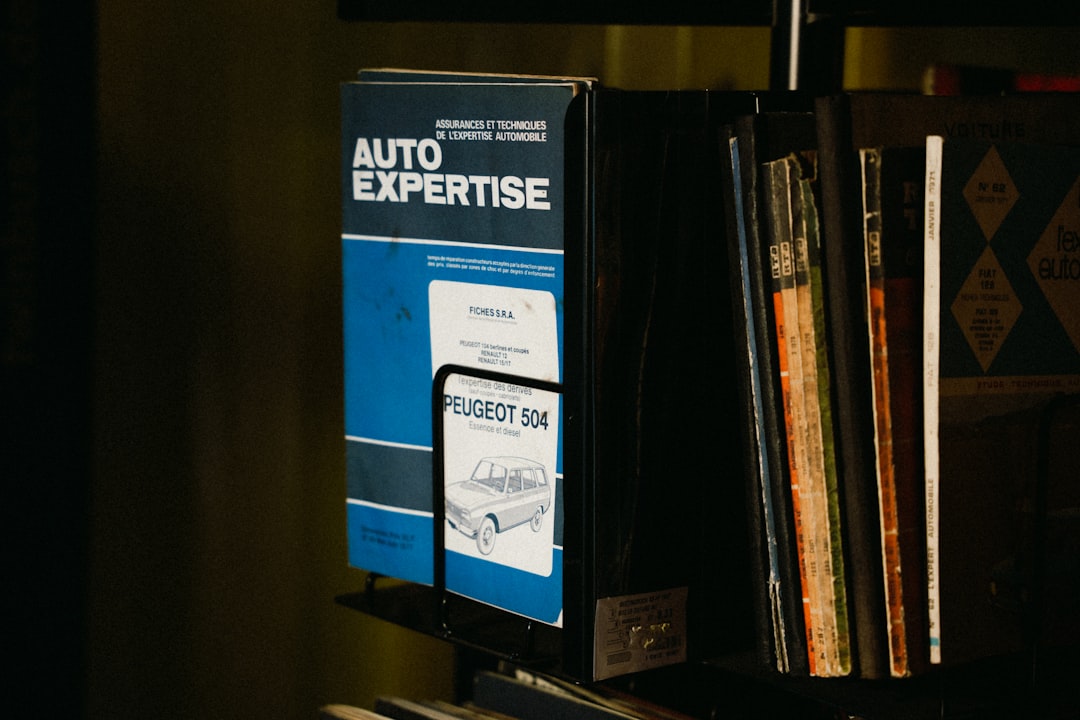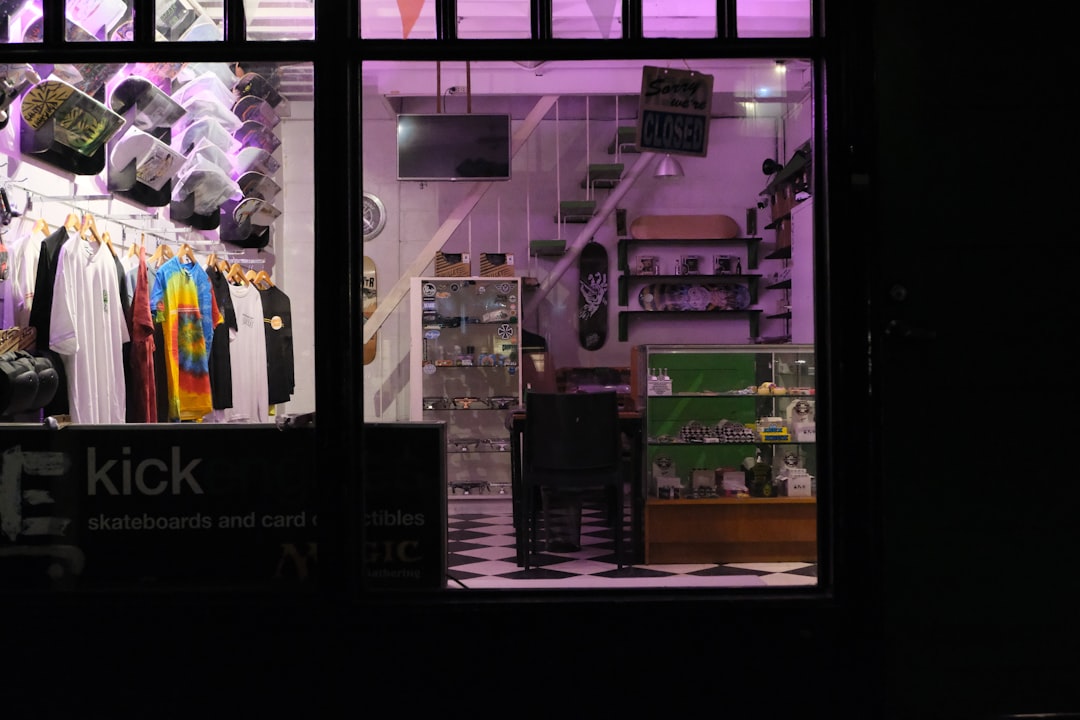

Engage prospects with a scan and streamline customer engagement with FREE QR code marketing tools by Sona – no strings attached!
Create a Free QR CodeFree consultation

No commitment

Engage prospects with a scan and streamline customer engagement with FREE QR code marketing tools by Sona – no strings attached!
Create a Free QR CodeFree consultation

No commitment
In today’s digitally driven world, QR codes have evolved from a novelty to a strategic powerhouse that bridges offline engagement with online action. For auto accessories stores, QR codes present a seamless way to spark customer interaction, capture valuable lead data, and increase store traffic without adding friction to the buyer journey.
Auto accessory buyers are often influenced by quick access to product information, promotions, and hands-on comparisons. These are areas where QR codes excel by connecting customers from the show floor or print materials to digital destinations. Many stores struggle to connect in-person visits to actual conversions, often missing high-value prospects who never fill out a form or sign up for follow-up. This gap leaves opportunities untracked in the CRM and slows outreach, giving competitors a head start.
This guide explores how auto accessories stores can leverage QR code technology for lead capture, customer engagement, attribution, and more. You will find actionable, data-driven strategies tailored for today’s market that help solve incomplete lead tracking, anonymous store visitors, and fragmented customer journeys. Throughout, you will see how platforms like Sona QR and Sona.com help centralize creation, measurement, and attribution so you can connect every scan to revenue impact.

QR codes bridge the gap between the showroom floor and your online funnel, turning physical interest into measurable digital action. When shoppers can scan a shelf tag to see specs, watch an installation video, or unlock a discount, you create a faster path from curiosity to conversion. More importantly, you transform anonymous foot traffic into identifiable leads that you can nurture through email, SMS, and retargeting.
One persistent challenge is that many high-intent shoppers never register their details, which results in missed opportunities when those interactions are not tracked in the CRM. Reworking analog processes like paper forms or static signage into QR-driven experiences ensures that every moment of interest can be captured and attributed. With Sona QR, you can generate dynamic codes, track scans in real time, and sync activity to tools like HubSpot or Salesforce for timely follow-up. Start creating QR codes for free.
Dynamic QR platforms streamline campaign setup, testing, and optimization, freeing your team to focus on personalization and nurturing instead of manual tracking. Over time, the data you collect from scans becomes a powerful predictor of intent, which helps you prioritize outreach and allocate budget more effectively.

Auto accessories stores face unique friction moving in-store interest to online conversion, especially for high-consideration products like electronics, performance parts, and custom interiors. Shoppers touch, compare, and ask questions on site, but many leave before they share contact details. As a form of QR code marketing, QR codes remove friction by making offline moments instantly actionable, while giving your team the data needed to follow up with relevance.
Another reason QR codes matter in this vertical is the pace of change. Seasonal promotions, vendor rebates, and new-model fitment updates require agility. Dynamic codes let you change the destination without reprinting collateral, which reduces waste and keeps your messaging aligned with inventory and campaigns.
By converting previously anonymous in-store behavior into identifiable digital signals, stores reduce wasted spend and improve campaign ROI. You can finally attribute revenue to the shelf sign, the direct-mail postcard, or the event banner that initiated the journey.

Auto accessories retailers benefit most from formats that enable product education, lead capture, and post-purchase engagement. The right format depends on the action you want the scanner to take and the data you want to collect.
Dynamic QR codes are especially valuable when you need to update links for new promotions, AB test landing pages, or target different customer segments. Static codes suit evergreen destinations like a store locator or a universal installation guide, while dynamic codes power seasonal campaigns and analytics-driven optimization at scale.

Growth in auto accessories retail often stalls because engagement is not captured at the exact moment interest peaks. The best opportunities exist where customers stop to compare, ask questions, or make a final decision. Every physical surface that holds attention can become a digital pathway to conversion.
Think about your traffic flows. Entryway signage, aisle endcaps, and checkout counters draw consistent attention. Vehicles on display, demo bays, and installation areas create high-intent moments that are rarely measured. By placing QR codes strategically, you can remove friction for buyers while collecting the data your team needs to follow up with precision.
By mapping your store’s hotspots and layering QR experiences onto existing fixtures, you can unlock underutilized real estate and convert in-store curiosity into pipeline.
The most effective programs align QR codes with common customer questions and decision points in the store. When shoppers can instantly get the information they need, they are more likely to proceed to a form fill, RSVP, or purchase. The use cases below are proven performers in this vertical, with more ideas in Sona QR’s automotive strategies.
Shoppers often hesitate to approach staff for deeper comparisons, or they prefer to research discreetly. QR-powered tools meet them where they are and encourage action without pressure. Post-purchase use cases are equally valuable since they help you keep customers engaged and create upsell opportunities tied to real usage.
Together, these use cases create a balanced program that serves the full customer lifecycle. You enable confident purchases today and keep the relationship alive with service, upgrades, and loyalty touchpoints tomorrow.
Each scan tells a story. It reveals where a shopper was, what they cared about, and how close they might be to buying. When you deploy multiple QR codes across your store, events, mailers, and vehicles, you generate a rich set of intent signals that can be used for precise retargeting and personalized follow-up. For a deeper dive into these signals, see Sona’s intent data guide.
Segmenting scans based on context allows your team to prioritize outreach and allocate budget to the best-fit opportunities. A scan on a performance exhaust display at 5 p.m. on a Saturday is different from a scan on a winter tire storage flyer on a weekday morning. Sona QR captures these details by code, campaign, location, and time, then pipes them to your CRM and ad platforms for action.
By turning scans into segments, you replace guesswork with observed behavior. This generates higher engagement rates, better return on ad spend, and a clearer path from offline curiosity to online conversion.
QR codes act as connectors across campaigns, tying together print, in-store, events, and digital channels. They reduce friction by letting people act instantly and provide attribution in contexts that have been hard to measure. Align your QR plan with your broader marketing calendar so each campaign has a clear path from scan to sale.
In auto accessories retail, the most common media are shelf tags, vehicle displays, direct mail, catalogs, in-store digital screens, and event signage. Integrating QR codes across these assets helps you coordinate messaging, centralize data, and avoid one-off experiments that are hard to scale.
A centralized platform like Sona QR helps you manage codes, monitor performance across channels, and sync scan data with your CRM and ad accounts. This creates a connected funnel where offline interest reliably becomes online engagement and revenue.
A strong QR program begins with a specific objective, a clear message, and a disciplined approach to testing and measurement. The steps below turn QR codes from tactical add-ons into a repeatable engine for lead generation and attribution.
Before you begin, decide what outcome you want, who you need to reach, and where they are most likely to scan. Build from there with dynamic codes so you can edit destinations, run experiments, and collect the data needed to optimize.
Define a vertical-specific goal and start with the moments where lead capture is currently a bottleneck. For auto accessories stores, spring detailing packages, winter tire swaps, or new-model tech bundles are common focal points.
Select dynamic codes for campaigns that require tracking, future edits, and targeting. Use static codes for evergreen content that will not change and where analytics are less critical.
Good design and scannability drive engagement. The code must stand out visually and be accompanied by a benefit-oriented call to action that tells customers exactly what they get by scanning.
Roll out the campaign where missed leads are most likely to occur and where the scanning context is strongest. Match placements to typical shopper journeys.
Use analytics to assess scan rates, segment by campaign and location, and refine the post-scan experience to improve conversion. Optimization compounds value over time.
With this checklist, your QR program evolves from a one-time tactic into a systematic engine for demand capture. Over time you will build a library of proven placements, CTAs, and offers that you can redeploy with confidence.
Attributing physical interest to revenue has long been a challenge for auto accessories retailers. Shoppers browse, ask questions, and compare products, but the digital trail often starts too late to connect the dots. QR code analytics change that by revealing which products spark engagement, which placements drive leads, and which campaigns contribute to sales. Learn more about offline attribution strategies to quantify real-world impact.
To prove impact, you need more than scan counts. You need to understand how scans progress into form fills, conversations, appointments, and purchases. Sona QR captures the who, where, and when of each scan. Sona.com connects those interactions to known buyer records with identity resolution and multi-touch attribution so you can quantify influence across the entire journey.
When scan signals live alongside website visits, ad clicks, and email engagement, you finally get a complete picture of progression from first touch to purchase readiness. This enables smarter budgeting, better merchandising decisions, and faster sales cycles.
Scaling success requires repeatable habits that keep scans flowing, data clean, and follow-up timely. The most effective programs make QR codes part of daily operations, not just marketing campaigns.
Focus on the parts of the journey where customers want clarity, confidence, or a deal. If your QR program consistently delivers those benefits, scanners will reward you with higher conversion and better review scores. Train staff to reference QR triggers in conversations so customers see scanning as the fastest route to answers or savings.
These practices help you get more from every print dollar and every square inch of your store. Over time, your QR program becomes a dependable source of leads and customer insights.

The most successful programs start small, measure carefully, and scale what works. Below are scenarios that reflect how auto accessories retailers are using QR codes to convert offline interactions into pipeline and revenue.
Each example pairs a simple placement with a clear incentive or benefit. The common thread is speed and clarity. When shoppers understand what they get for scanning, they are far more likely to engage and share their details.
These campaigns highlight not only where to put QR codes, but also how to position the benefit. When value is clear and timing is right, QR codes turn micro-moments into measurable outcomes.
Success with QR codes relies on clear offers, thoughtful placement, and disciplined follow-up. Avoid treating QR codes as a decoration. Treat them as an onramp to a defined journey with a trackable outcome.
Teams that struggle usually miss on the basics. Codes are too small, lighting is poor, or the destination is not mobile-friendly. Others forget to instrument links with UTMs or to sync scans to the CRM. These gaps are easy to fix and make a dramatic difference in performance.
QR codes empower auto accessories stores to turn every shelf, display, and print piece into a lead generator and engagement engine. By capturing scans, attributing them to online and point-of-sale actions, and syncing outcomes with CRM and marketing systems, retailers move beyond blind spots created by anonymous store visitors and untracked touchpoints.
These strategies unlock greater value from both online and physical investments, delivering measurable growth, better customer experiences, and loyalty-building moments. With Sona QR for creation and analytics, and Sona.com for identity resolution and attribution, you can surface early buying signals, prove campaign ROI, and minimize lost opportunities while modernizing how your store measures and grows its sales pipeline.
QR codes have revolutionized auto accessories stores by transforming static product displays and promotions into dynamic lead-capturing tools. Whether it’s attracting new customers, enhancing the in-store shopping experience, or gathering actionable insights on shopper behavior, QR codes streamline engagement and turn every interaction into a measurable growth opportunity. Imagine instantly knowing which accessories spark the most interest and being able to follow up with personalized offers that close the deal.
With Sona QR, you can effortlessly create dynamic, trackable QR codes that update instantly without the hassle of reprinting. Connect every scan to real revenue, optimize your marketing campaigns on the fly, and build a loyal customer base eager to return. Start for free with Sona QR today and transform every scan into a meaningful connection—and a profitable sale.
QR codes provide quick access to product information, promotions, installation videos, and comparison tools, allowing customers to engage discreetly and efficiently while bridging offline interest with online conversions.
QR codes reduce friction in the buyer journey, enable real-time tracking and lead capture, allow dynamic content updates without reprinting, provide detailed attribution data, and cost-effectively increase engagement across multiple touchpoints.
By replacing analog forms with QR-driven experiences, stores can convert anonymous foot traffic into identifiable leads through instant data capture linked to CRM systems for timely follow-up and nurturing.
QR codes can be placed on demo vehicles or rental cars to provide model-specific accessory bundles, limited-time discounts, and lead capture opportunities, extending marketing reach beyond the store and enabling post-event follow-up.
Stores can increase sales by strategically placing QR codes at high-intent touchpoints like point-of-sale, vehicle displays, packaging, and events to drive loyalty enrollment, warranty registration, coupon redemption, and appointment bookings, all tracked for optimization.
Useful formats include web links for product education, lead capture forms for registrations and bookings, coupon unlocks for discounts, vCards for saving contacts, and review links to boost ratings and testimonials.
QR codes capture detailed scan data including time, location, device, and campaign source, which can be synced to CRMs for multi-touch revenue attribution, enabling stores to measure which touchpoints drive leads and sales.
Effective placements include point-of-sale counters, window signage, vehicle displays, packaging inserts, event setups, catalogs, direct mail, and digital signage to capture shoppers at moments of high interest.
Stores should define clear objectives, select appropriate QR code types, design with clear calls to action, deploy across relevant channels, and track scans to optimize campaigns based on performance data.
Stores should avoid poor code placement and lighting, unclear calls to action, non-mobile-friendly destinations, lack of measurement and CRM integration, and failure to incentivize scanning with specific, time-bound offers.
Use Sona QR's trackable codes to improve customer acquisition and engagement today.
Create Your FREE Trackable QR Code in SecondsJoin results-focused teams combining Sona Platform automation with advanced Google Ads strategies to scale lead generation

Connect your existing CRM

Free Account Enrichment

No setup fees
No commitment required

Free consultation

Get a custom Google Ads roadmap for your business






Launch campaigns that generate qualified leads in 30 days or less.
